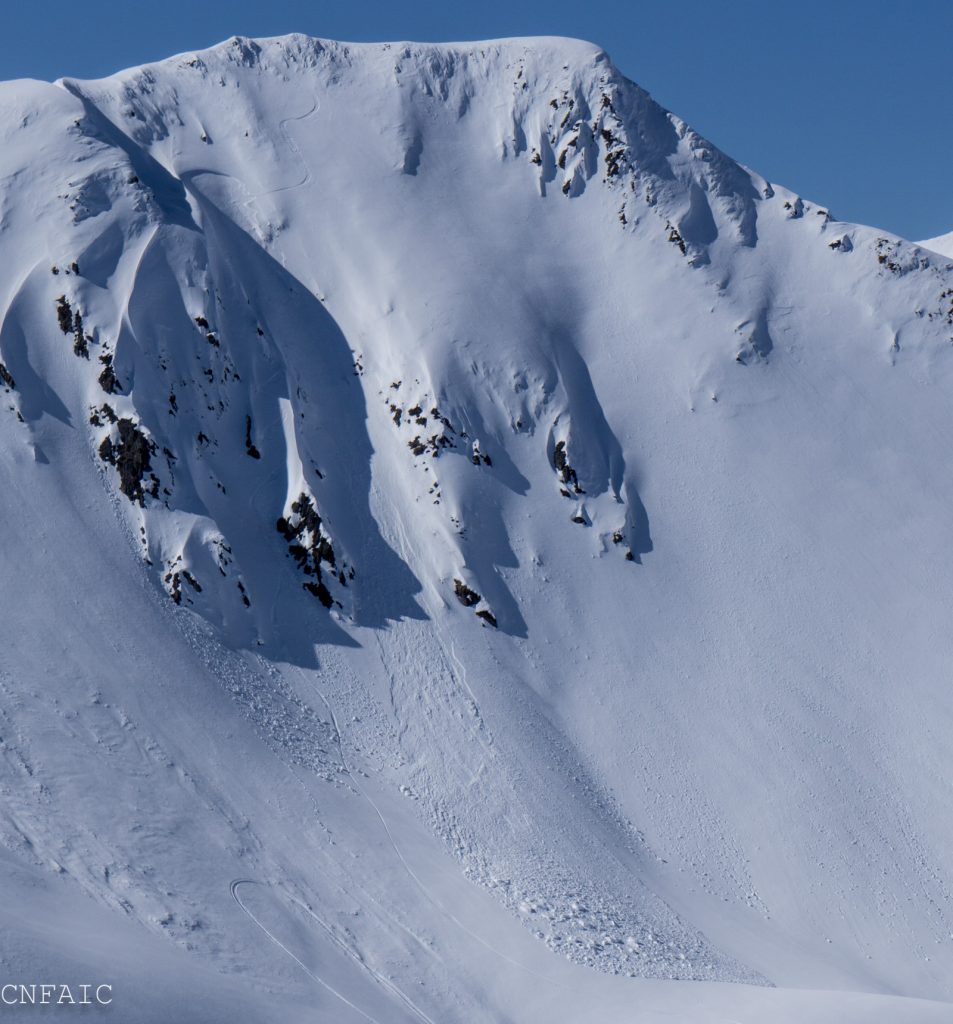Turnagain Pass
|
|
The avalanche danger is MODERATE on slopes above 2,500′. Triggering a slab 1-2′ deep is possible on steep Northerly slopes in the Alpine. Pay attention to changing conditions and as always, give cornices a wide berth and limit travel under glide cracks.
PORTAGE VALLEY: Cornice fall and/or avalanches from above have the potential to send debris to valley bottoms and into snow-free zones. Traveling along hiking trails, such as the Byron Glacier Trail with steep slopes overhead is not recommended on rainy/snowy days or on sunny afternoons.
LOST LAKE / SEWARD: Similar to Turnagain, dry slab avalanches could be a concern on high elevation northerly slopes.
FRIDAY AVALANCHE OUTLOOK:
No avalanche forecast will be issued tomorrow. Similar avalanche danger is expected Friday, Apr 19th but with the potential for more snow to fall during the day. Pay attention to changing conditions, evaluate how well the new snow is bonding to old snow surfaces and look for signs of instability.
Advisories: For the remainder of April, avalanche advisories will be posted 4 days/week (on Tues, Thur, Sat and Sun). The avalanche center will close for the season on Saturday, April 27th when we will post our springtime tips. Thank you everyone for tuning in!
Winter has returned to Hatcher Pass with elevated avalanche danger. Be sure to check out yesterday’s forecast if you are headed that way!


